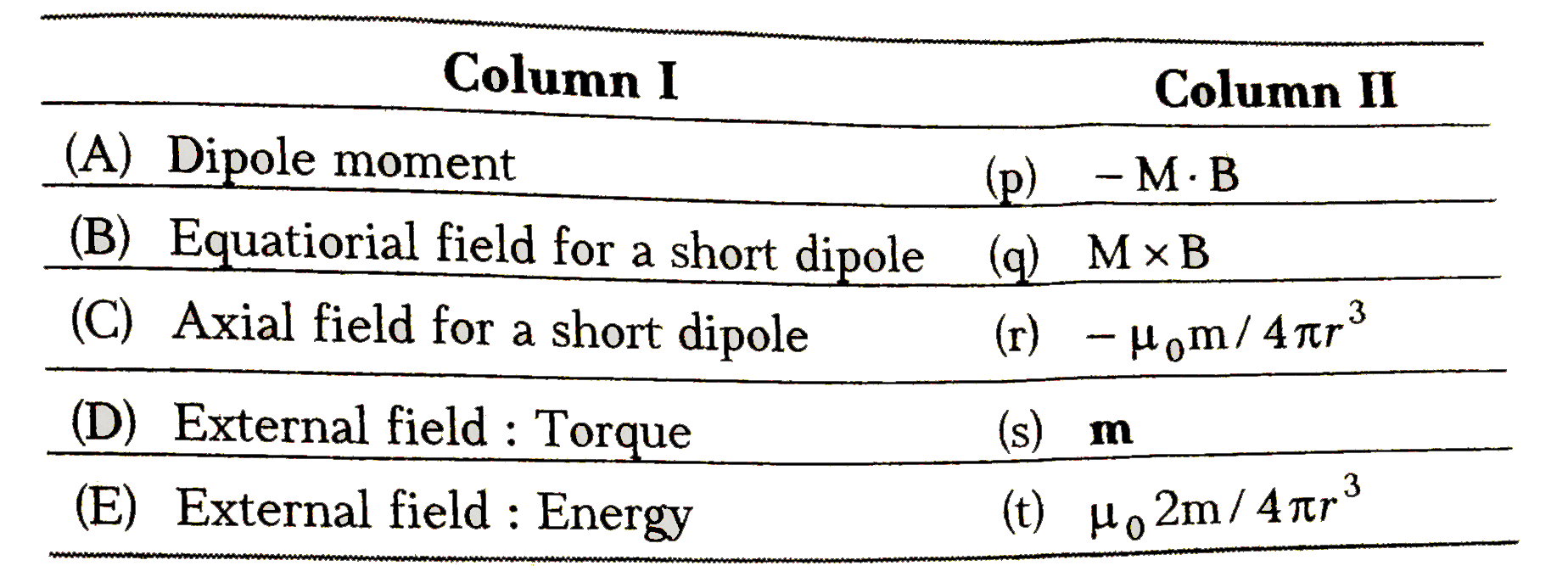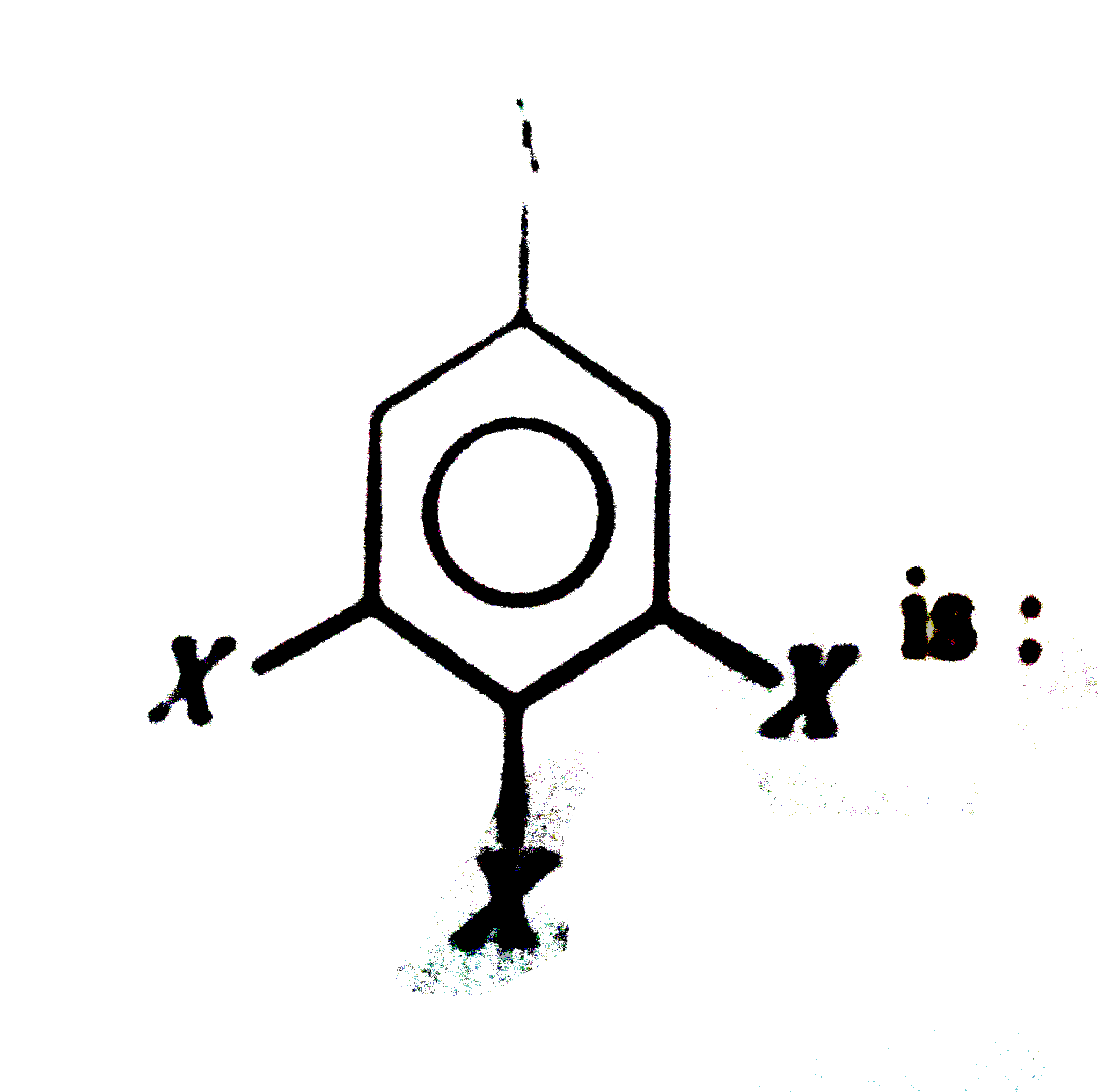a) Discuss the significance/applications of dipole moment.
b) Represent diagrammatically the bond moments and the resultant dipole moment in CO2,NF3 and CHCl3
The correct Answer is:a
Step-by-Step Text Solution
Part a: Significance/Applications of Dipole Moment
1. Determination of Polarity:
- The dipole moment (μ) helps in determining whether a molecule is polar or non-polar. A non-zero dipole moment indicates that the molecule is polar, while a zero dipole moment indicates that it is non-polar.
2. Ionic Character:
- The dipole moment can be used to calculate the percentage of ionic character in a bond. This is given by the formula:
\(
\text{Percentage Ionic Character} = \left( \frac{\mu_{\text{observed}}}{\mu_{\text{ionic}}} \right) \times 100
\)
- Here, μ_observed is the measured dipole moment, and μ_ionic is the dipole moment expected for a completely ionic bond.
3. Symmetry of Molecules:
- Dipole moments can indicate the symmetry of molecules. For example, a symmetrical molecule like CCl₄ has a dipole moment of zero, suggesting that it is non-polar.
4. Cis-Trans Isomerism:
- The dipole moment can help differentiate between cis and trans isomers. Generally, cis isomers have a higher dipole moment than trans isomers due to the arrangement of functional groups.
5. Ortho, Meta, and Para Isomers:
- Dipole moments can also provide information about the relative positions of substituents in aromatic compounds, such as ortho, meta, and para isomers.
Part b: Diagrammatic Representation of Dipole Moments
1. CO₂ (Carbon Dioxide):
- CO₂ has a linear structure. The dipole moments from each C=O bond are equal in magnitude but opposite in direction, resulting in a net dipole moment of zero.
- Diagram:
O ← C → O
(Dipole moments cancel out)
2. NF₃ (Nitrogen Trifluoride):
- NF₃ has a trigonal pyramidal shape due to the presence of a lone pair on nitrogen. The dipole moments from each N-F bond point towards the fluorine atoms.
- Diagram:
F
|
F - N (lone pair)
|
F
(Resultant dipole moment points upwards)
3. CHCl₃ (Chloroform):
- CHCl₃ has a tetrahedral structure. The dipole moments from the C-Cl bonds point towards the chlorine atoms, while the C-H bond points towards the hydrogen atom.
- Diagram:
Cl|Cl−C−H|Cl(Restant–––––dipo≤momentp∮s→wardsCl)
- The dipole moment (μ) helps in determining whether a molecule is polar or non-polar. A non-zero dipole moment indicates that the molecule is polar, while a zero dipole moment indicates that it is non-polar.
- The dipole moment can be used to calculate the percentage of ionic character in a bond. This is given by the formula:
\(
\text{Percentage Ionic Character} = \left( \frac{\mu_{\text{observed}}}{\mu_{\text{ionic}}} \right) \times 100
\)
- Here, μ_observed is the measured dipole moment, and μ_ionic is the dipole moment expected for a completely ionic bond.
- Dipole moments can indicate the symmetry of molecules. For example, a symmetrical molecule like CCl₄ has a dipole moment of zero, suggesting that it is non-polar.
- The dipole moment can help differentiate between cis and trans isomers. Generally, cis isomers have a higher dipole moment than trans isomers due to the arrangement of functional groups.
- Dipole moments can also provide information about the relative positions of substituents in aromatic compounds, such as ortho, meta, and para isomers.
- CO₂ has a linear structure. The dipole moments from each C=O bond are equal in magnitude but opposite in direction, resulting in a net dipole moment of zero.
- Diagram:
O ← C → O
(Dipole moments cancel out)
- NF₃ has a trigonal pyramidal shape due to the presence of a lone pair on nitrogen. The dipole moments from each N-F bond point towards the fluorine atoms.
- Diagram:
F
|
F - N (lone pair)
|
F
(Resultant dipole moment points upwards)
- CHCl₃ has a tetrahedral structure. The dipole moments from the C-Cl bonds point towards the chlorine atoms, while the C-H bond points towards the hydrogen atom.
- Diagram:
Cl|Cl−C−H|Cl(Restant–––––dipo≤momentp∮s→wardsCl)
Topper's Solved these Questions
- BOOK - NCERT EXEMPLAR ENGLISHCHAPTER - CHEMICAL BONDING AND MOLECULAR STRUCTUREEXERCISE - Assertions and Reasons3videos
CHEMICAL BONDING AND MOLECULAR STRUCTURE
- BOOK - NCERT EXEMPLAR ENGLISHCHAPTER - CLASSIFICATION OF ELEMENTS AND PERIODICITY IN PROPERTIES.EXERCISE - Long answer types question7videos
CLASSIFICATION OF ELEMENTS AND PERIODICITY IN PROPERTIES.
Similar Questions
Zero dipole moment is present in
View SolutionThe unit of dipole moment is
View SolutionComment on dipole moment of H2CO3,
View SolutionThe compound that has the highest dipole moment is
View SolutionSketch the bond moments and resultant dipole moments in cis and trans forms of C2H2Cl2
View SolutionWith reference to magnetic dipole, match the tems of Column I with the tems of Column Ii and Choose the correct option from the codes given below.
 View Solution
View SolutionThe compound with no dipole moment is
View SolutionWhat are SI units of dipole moment?
View SolutionCorrect statement about dipole moment is :-
View SolutionDipole moment of
 is 1.5D. The dipole moment of
is 1.5D. The dipole moment of
 View Solution
View Solution

